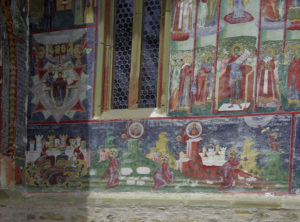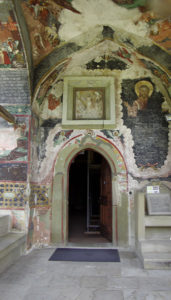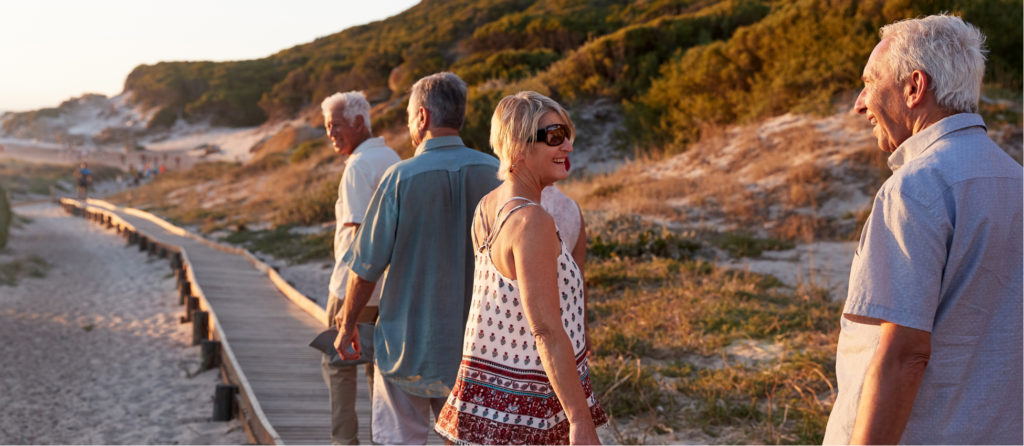Sucevita Monastery was the last to be built at the end of the C16th by three brothers who were the grandsons of Petru Rares on their mother’s side. One became the ruler of Moldavia, another ruler of Walachia and the third a Bishop who was the Metropolitan of Moldavia. They used their wealth and influence to erect what many consider to be the peak of of the painted monasteries. Two of them are buried in the burial chamber of the church.
More than sixty nuns still live in the monastery. There is a small workshop below the bell tower where icons are restored.
The monastery was built in the wide and fertile valley of the Sucevita river. A large settlement has grown up outside the walls with a shop and craft stalls by the car park. The monastery is a short walk down a tree lined path.
It is surrounded by tall walls strengthened with buttresses and corner turrets. Entry is through a large gateway turret with a scene of the Resurrection painted above it. There is a small chapel on the first floor.
The monastic buildings are on the east wall. As well as providing accommodation for the sixty nuns who work here, it also contains the museum. This has the embroidered tomb covers from two of the founder brothers, as well as manuscripts, books, icons and religious silver ware.
A wood enclosed gallery runs along the north wall and gives access to a wall walk.
The church is the typical Triconch building with exonarthex, pronaos, burial chamber, naos and chancel. It also has two external open porches on the north and south sides of the exonarthex, which were added soon after the church was built. It is unusual in that the west end is left unpainted. According to legend, the brothers painting the frescoes fell off the scaffolding and died which is why the west end isn’t painted.
The frescoes date from 1595/6 and are remarkably well preserved. The Prayer of All the Saints covers all three apses with its images of angels, saints, prophets and apostles.
On the south wall is the Akathistos Hymn at the top with the Tree of Jesse below and the pagan philosophers at the bottom. To the left of the philosophers is the Vision of Moses with Moses receiving the Tablets of Law from the hand of God. On the left is the scene of the martyrdom of the Holy Fathers of Mount Sinai by barbarians in 296AD. Above this is a painting of the Crowning of the Virgin
The Ladder of St John of Sinai fills the north wall. A row of monks is seen climbing up a diagonal ladder towards the waiting figure of Christ at the top left corner. On the right, ordered ranks of angels help the monks achieve their goal. Each of the steps symbolises a virtue which a monk must possess to attain Heaven. On the left are the bodies of monks who slip off the ladder and are dragged down by waiting devils.
Above this in the panels with the pale background are scenes from Genesis, beginning with the creation of the world, Eve being formed from the rib of Adam to the temptation of the serpent and the fall from paradise.
Sucevita is a large and impressive monastery. The frescoes are still remarkably bright and probably the best of the painted monasteries. There is a small charge to visit and a photo permit for the outside of the building is 10 Lei.
There are more pictures “here.”:http://wasleys.org.uk/eleanor/otherholidays/romania/day_six/six_three/index.html
We visited during a ten day trip to Romania. My detailed report with all my pictures is “here.”:http://wasleys.org.uk/eleanor/otherholidays/romania/index.html









